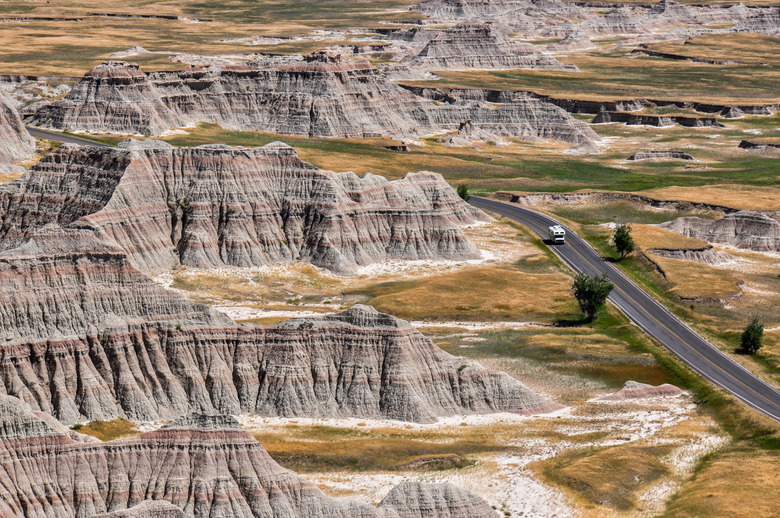Facts About The Great Plains
The Great Plains in the middle of the United States may be flat, but don't think of the area as boring. There is a surprising diversity to the landscape, from the Badlands of the Dakotas to the flat-top mesas of Texas. Sweeping vistas of farmland and grasslands, and a rich diversity of animal and plant life, add to the beauty and interest of the Great Plains. There is also a rich history, as the land was once forested and, in part, covered with glaciers.
Great Plains Formation
Great Plains Formation
The Great Plains are exceptionally flat because they used to be the bed of what was once the interior sea. The Great Plains were completely submerged, 570 million years ago. As the tectonic plates began to shift and the North American continent thrust upward, the sea flowed away, exposing the Plains.
Rivers, glaciers, wind and continued continental uplift shaped the Plains over the course of hundreds of millions of years, although most of the modern formations were created within the last two million years. Geologically speaking, the Great Plains are a relatively young environment.
Notable Geological Formations
Notable Geological Formations
Because the Great Plains are so vast, they have a variety of stunning geological formations. For instance, in central Texas there is a sudden upthrust of land in the middle of otherwise level plains. However, the uplift itself is so extremely flat that early settlers named it the Llano Estacado (Staked Plain) because they had to mark their land by stakes; there were no natural landmarks by which to separate settlements.
Farther north are the Badlands of South Dakota. The Badlands are a series of flat-topped rocks in which gullying has taken place, creating uneven valleys. The formation was created because the land is made of clay-rich material, such as shale, which water cannot penetrate. Rain runoff over the eons chipped away at the surface of the rock, creating the valleys.
The Great Plains are also home to the High Plains, or Ogallala, Aquifer, which spans from Canada all the way to Texas. As one of the largest sources of fresh water in the world, it's thought to hold one quadrillion gallons of water.
Vegetation of the Great Plains
Vegetation of the Great Plains
The Great Plains are primarily grasslands. In particular, they are mostly covered with short grasses, such as blue grama and buffalograss. These short grasses abound because the land has so long been used as grazing pasture for livestock, which favor such grass as feed.
Although the Plains are now almost totally covered by grasslands, they were not always so. Prior to the last ice age, ten millennia ago, there were many trees and perhaps even forests across the landscape. However, as the ice retreated, the climate that remained was semi-arid, leaving the land predisposed to grasses.
Animals of the Great Plains
Animals of the Great Plains
In the Great Plains, bison are the largest and most recognizable animals. Although once 60 million strong, their numbers have now dwindled to 20,000, making them among the most threatened species on the Plains.
Other animals include black-footed ferrets and pronghorn antelope, as well as many species of grassland birds, such as grouse, hawks and vultures. The Plains are also home to many species of bat, foxes, and deer.
Cite This Article
MLA
Michelle, Meg. "Facts About The Great Plains" sciencing.com, https://www.sciencing.com/great-plains-5061052/. 25 April 2018.
APA
Michelle, Meg. (2018, April 25). Facts About The Great Plains. sciencing.com. Retrieved from https://www.sciencing.com/great-plains-5061052/
Chicago
Michelle, Meg. Facts About The Great Plains last modified March 24, 2022. https://www.sciencing.com/great-plains-5061052/
